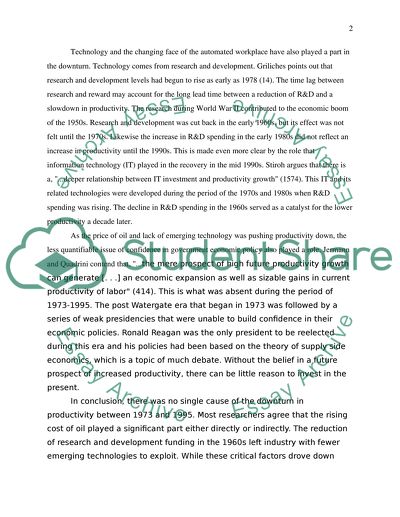The Slowdown in the Growth Rate of the U.S. Economy From 1973 to 1995 Essay. Retrieved from https://studentshare.org/macro-microeconomics/1521201-the-slowdown-in-the-growth-rate-of-the-us-economy-from-1973-to-1995
The Slowdown in the Growth Rate of the U.S. Economy From 1973 to 1995 Essay. https://studentshare.org/macro-microeconomics/1521201-the-slowdown-in-the-growth-rate-of-the-us-economy-from-1973-to-1995.


